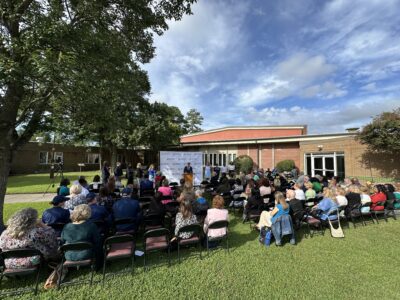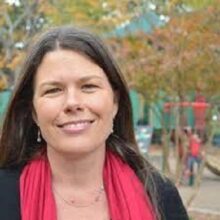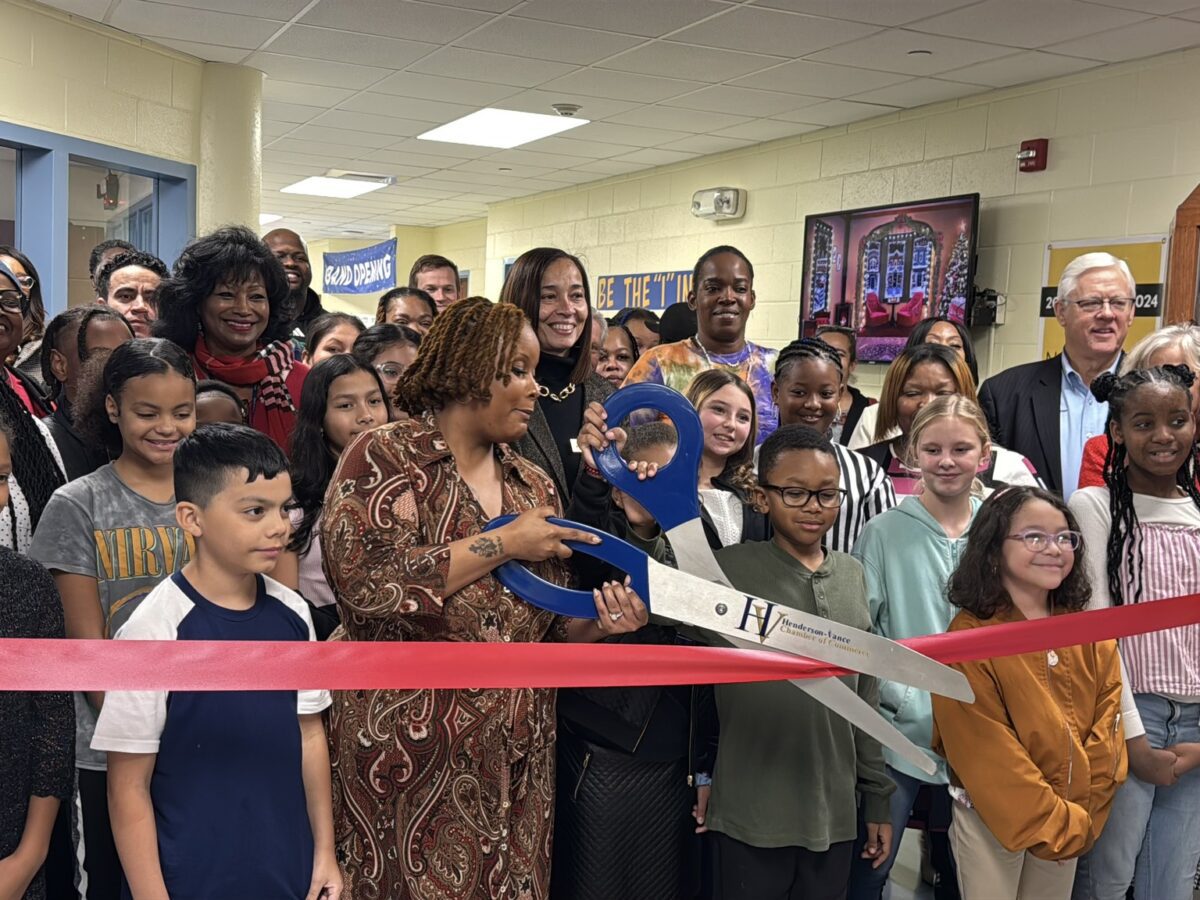
The NC Community Schools Coalition (the Coalition) is a network of community schools in school districts across North Carolina and the regional and statewide partners that support them. The Coalition aspires to serve 23,000 students in 46 schools across 28 districts by 2026.
The mission of the Coalition is “to improve the academic, mental, and physical health of North Carolina students through the development of Full-Service Community Schools (FSCS) across the state.”
These schools don’t just focus on academics; instead, there are four pillars of support, which focus on collaborative leadership, integrated student support, expanded and enriched learning opportunities, and family and community engagement.
![]() Sign up for the EdWeekly, a Friday roundup of the most important education news of the week.
Sign up for the EdWeekly, a Friday roundup of the most important education news of the week.
Community schools present a powerful vision for what it looks like when students, families, and whole communities create the public schools they need to thrive, according to the Coalition.
It’s an evidence-based model for school improvement under the Every Student Succeeds Act (ESSA) that works. Superintendent Mo Green included the model in his strategic plan.
In its first two years serving as a community school, P.W. Moore Elementary in Elizabeth City increased its school performance grade from an F to a C, also exceeding growth.
Dr. Keith Parker, the superintendent in the Elizabeth City-Pasquotank Public Schools, says, “North Carolina has been and must continue to be to be a leader in public education in the United States. When I think about the challenges we face right now, the community school model offers tangible strategies to serve students and communities better.”
I hope what comes out of this is that families and students feel connected to their school. It’s really important that they have voice and ownership in their education. I really believe this is going to improve outcomes for the kids all across our region.
Dr. Kelly Batts, regional director, Sandhills Region, N.C. Department of Public Instruction
I hope that this becomes a model for our state so we can see this more widespread throughout North Carolina.
The Coalition
In 2023, the U.S. Department of Education gave Duke University a five-year grant for up to $10 million a year to fund a community schools coalition.
The work of the Coalition statewide is led by Dan Kimberg and Dr. Kanecia Zimmerman, who serve as co-directors.
Zimmerman is employed by Duke Clinical Research Institute.
The NC Community Schools Coalition, Inc. is a nonprofit. Kimberg is employed by the nonprofit, and Melissa McDonald is the director of services. The nonprofit is charged with implementation and driving the expansion of the model across North Carolina.
A state steering committee includes the Coalition, Duke Clinical Research Institute, the N.C. Association of Educators, N.C. Department of Public Instruction (DPI), the Public School Forum of North Carolina, and the Southeast Regional Coalition for University-Assisted Community Schools. Superintendents of participating school districts and leaders from philanthropy also serve on the steering committee.
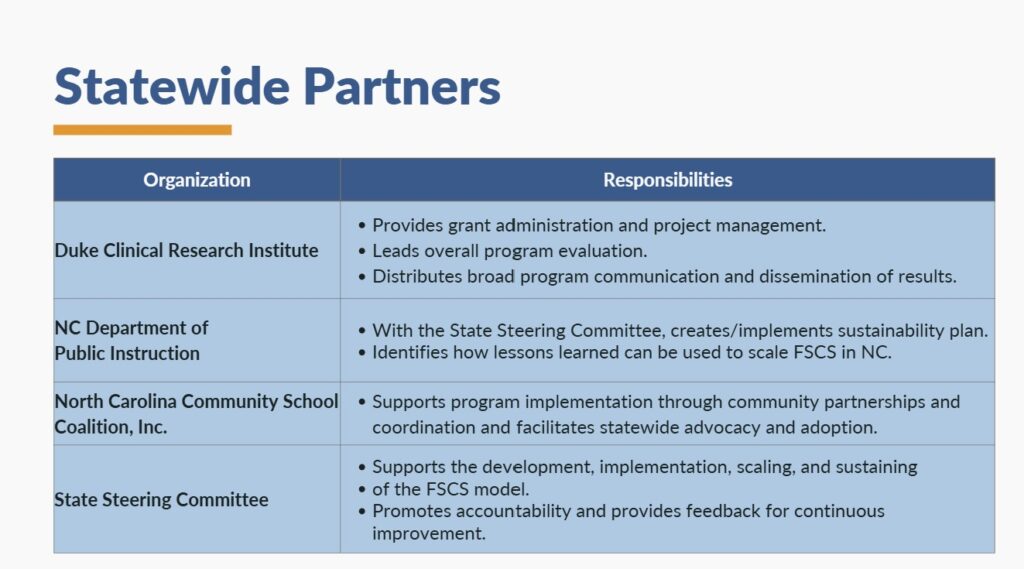
The Southeast Regional Coalition for University-Assisted Community Schools — which includes Duke University, East Carolina University, and N.C. Central University — serves as a core partner to community schools supporting coalition building, storytelling, connecting, pipeline development, policy change, and research.
Regional partners include Rural Education Institute at East Carolina University in the east, Student U in the piedmont, and the United Way of Asheville and Buncombe County in the west.
Implementation is hyper-local, “meaning it reflects the unique assets and values of each community,” according to the website, which includes local partners.
In 2024-25, nine schools in five districts were part of the Coalition, including Hall Fletcher Elementary in Asheville City School District; Enka Intermediate in Buncombe County Public Schools; Central Elementary and New Hope Elementary in Orange County Schools; P.W. Moore Elementary, Elizabeth City Middle, and Northeastern High in Elizabeth City-Pasquotank Public Schools; and Clarke Elementary and Vance County High in Vance County Public Schools.
In fall 2025, 14 schools in six more districts will join, including Windsor Elementary and Bertie Middle in Bertie County Public Schools; Club Boulevard Elementary, Fayetteville Street Elementary, and Lakewood Elementary in Durham Public Schools; Mattamuskeet School in Hyde County Schools; Gaston STEM Leadership Academy and Northampton High in Northampton County Schools; Roseboro Elementary, Salemburg Elementary, Roseboro-Salemburg Middle, and Lakewood High in Sampson County Schools; and Washington County Elementary and Washington County High School in Washington County School District. Vance County Middle will also join the Coalition for a total of 23 schools in 11 districts.
At the end of July, the Coalition held its second annual leadership summit. The summit gathered more than a hundred community school coordinators, partners, and stakeholders to celebrate the successes of the first cohort and welcome the second cohort coordinators.

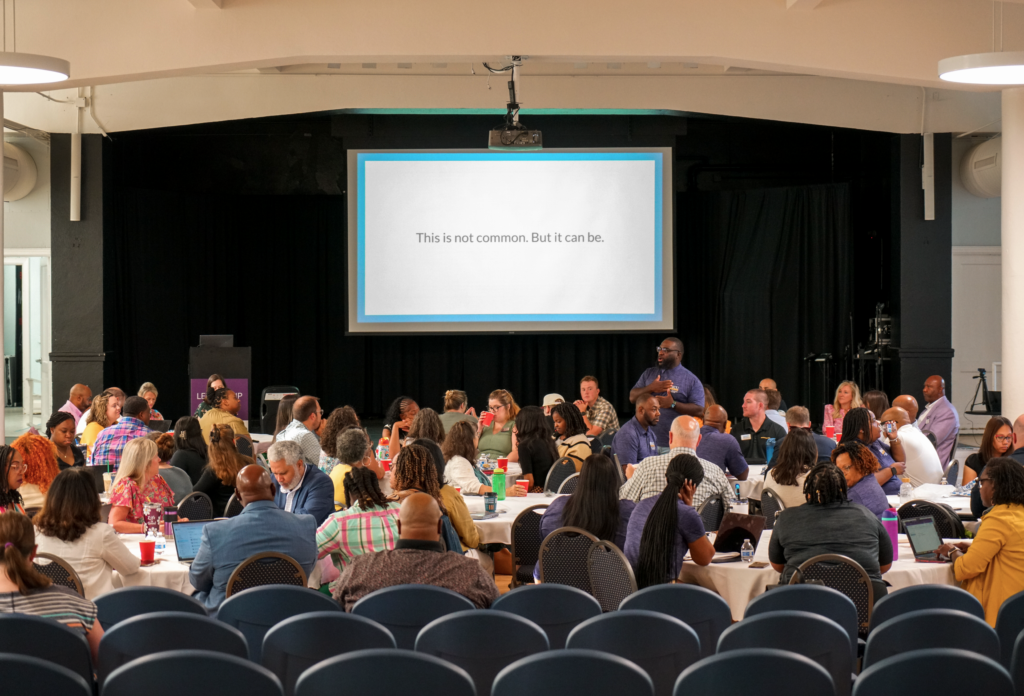
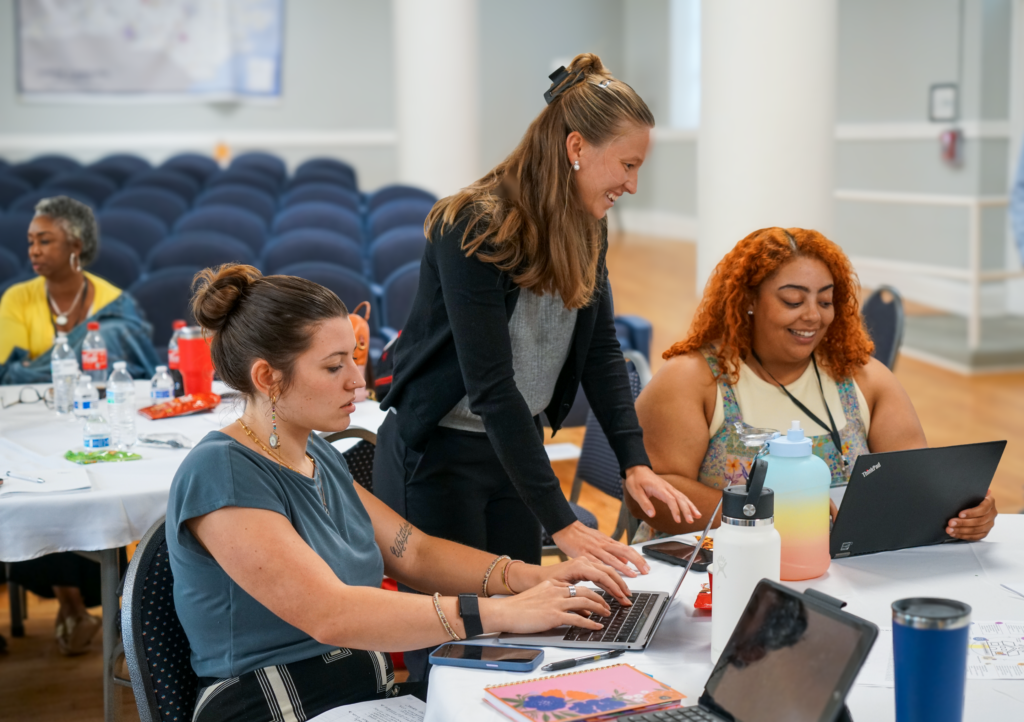
An evaluation — led by the Duke Clinical Research Institute and the Duke Center for Child and Family Policy in collaboration with DPI — will look at key indicators of success, including the impact on academic achievement and school climate as well as health and social supports. The evaluation includes monthly data collection and reflection, which will be collected in a comprehensive dashboard.
In other states, longer-term funding for community schools has come from braiding philanthropic, state, and federal investments. At scale, the Coalition estimates it would cost $9.2 million a year to serve 23,000 students in 28 districts in North Carolina — about $200,000 per school per year.
I have been a superintendent for 19 years and have tried to piecemeal support together for my schools, but not until now have I had an intentional system, a vision of intentional systems.
Dr. Rosa Atkins, superintendent of Northampton County Schools
This is powerful.
Key elements of the model
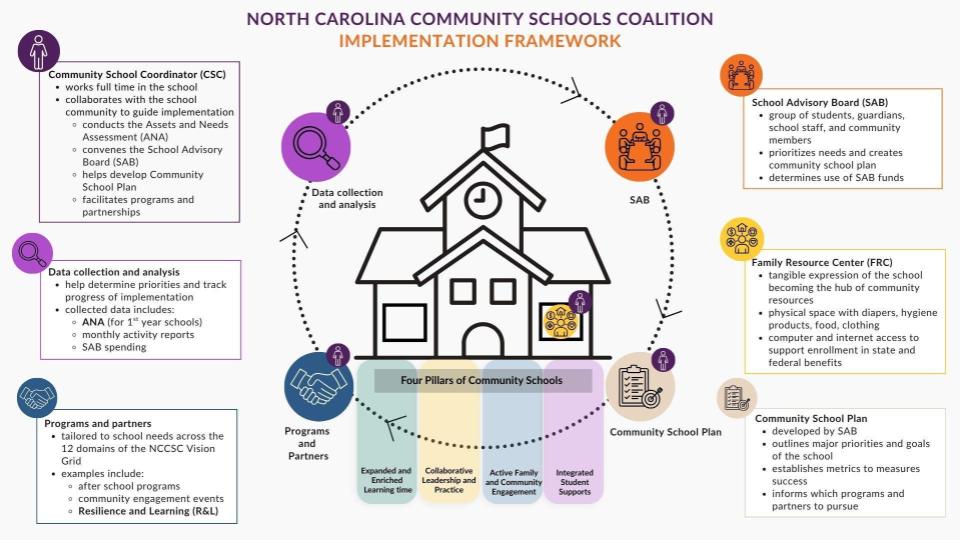
Each community school conducts an assets and needs assessment to identify strengths and challenges through surveys, interviews, and focus groups.
Each community school has a community school coordinator, a full-time staff member.
Each community school has a school advisory board — including the school coordinator, students, educators, and parents “to voice the school’s needs and wants and ensure the right services get priority” — and the board has access to discretionary funds.
Each community school has a family resource center that meets basic food, clothing, and hygiene needs for students, staff, and families.
Each community school offers individualized programs and partnerships tailored to the strengths and challenges of the students and school.
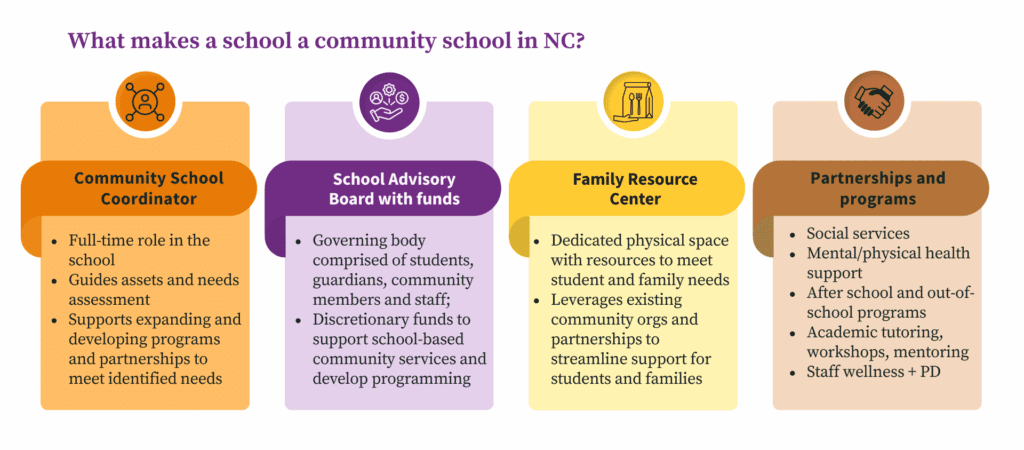
The community schools in the Coalition prioritize 12 supports.
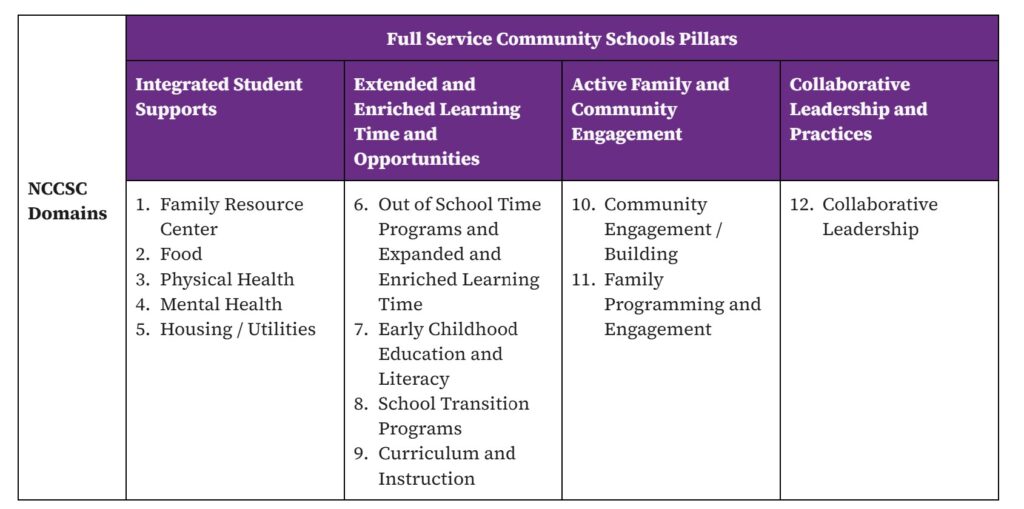
When students or schools bump into challenges, which they do, support from the NC Center for Resilience and Learning provides professional development for educators, ongoing coaching, or technical assistance.
“Behind every behavior is trauma,” says Ervin Jones, a restorative facilitator and social and emotional learning specialist at Elizabeth City Middle School. “When there’s no healing, there’s no learning.”
We’re not just opening doors, we’re passing out keys so the doors don’t close again.
J’Avonn Davis, community school coordinator at Elizabeth City Middle School
Community schools become hubs for their community
Last year, Clarke Elementary in Vance County opened its family resource center with support from Student U. A one-stop shop, the center is open Monday through Friday, 8:30 a.m. – 3:30 p.m. and by appointment. It offers access to food, clothing, a shoe closet, hygiene products, laundry machines, computers, and showers.
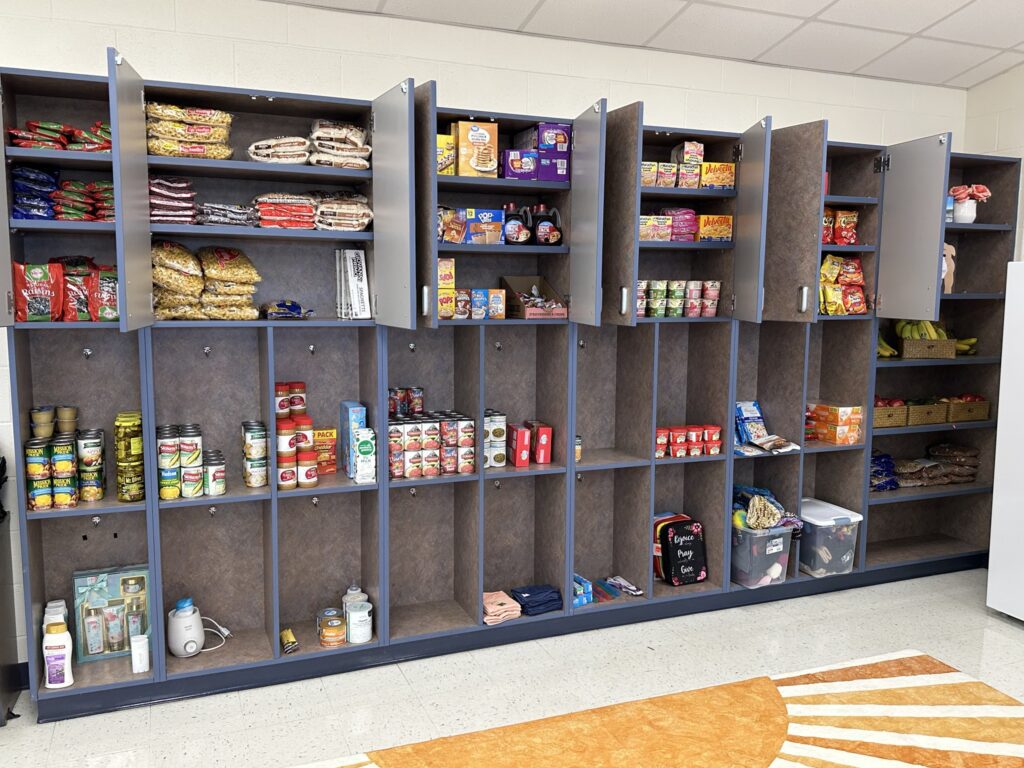
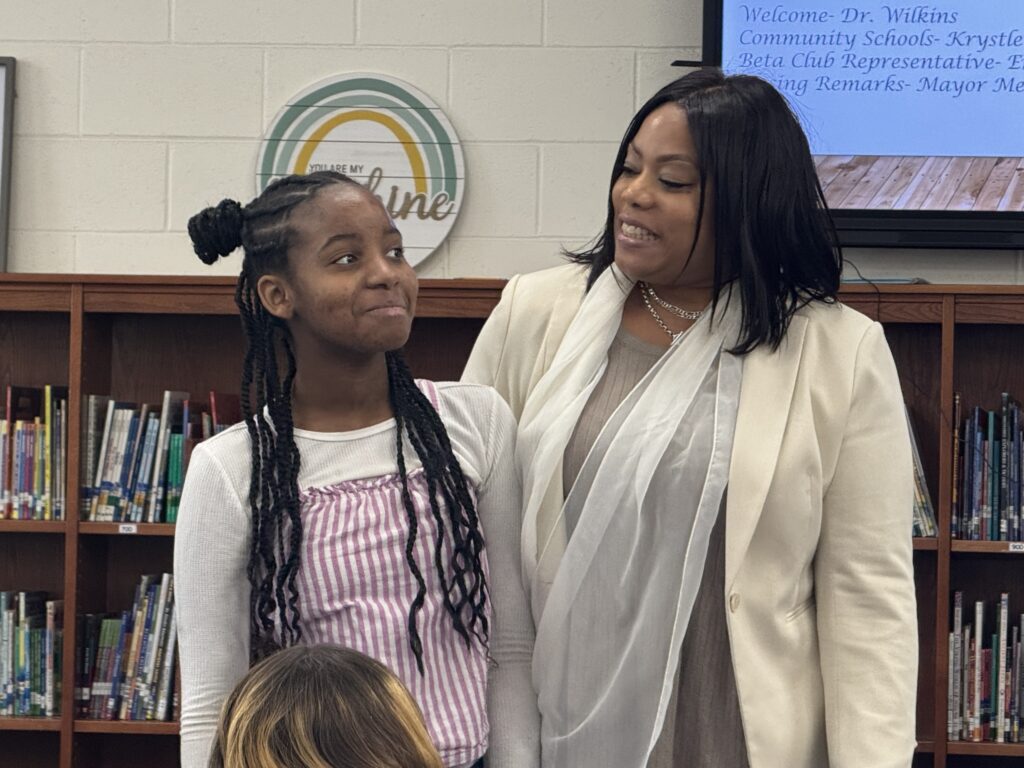
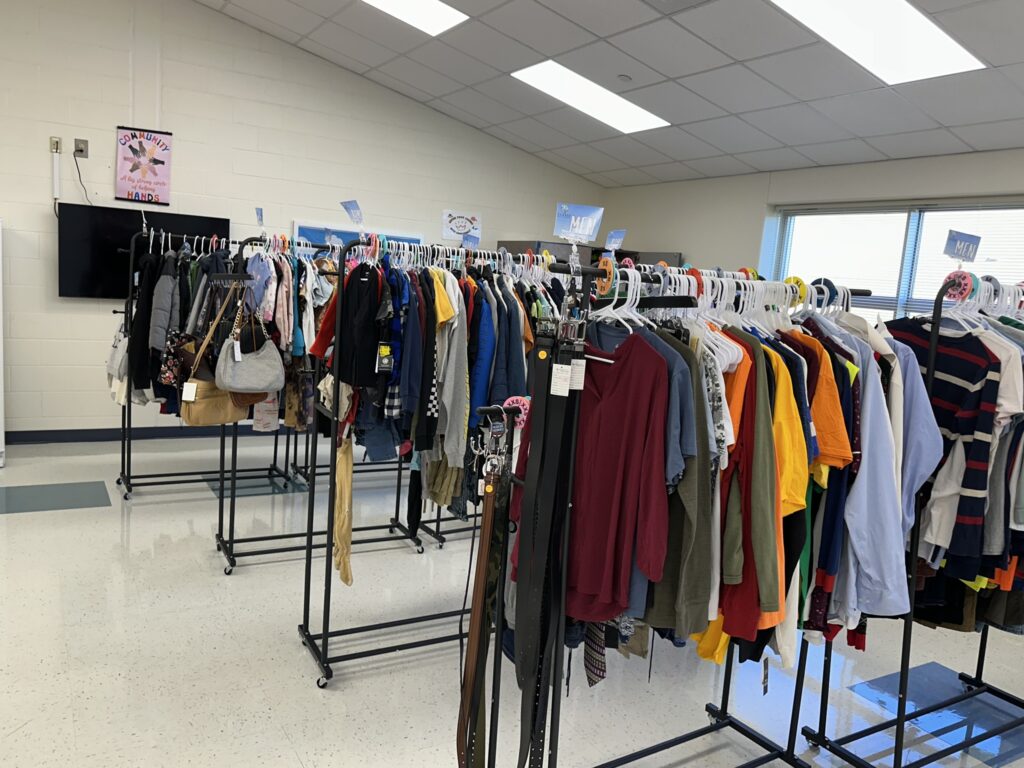
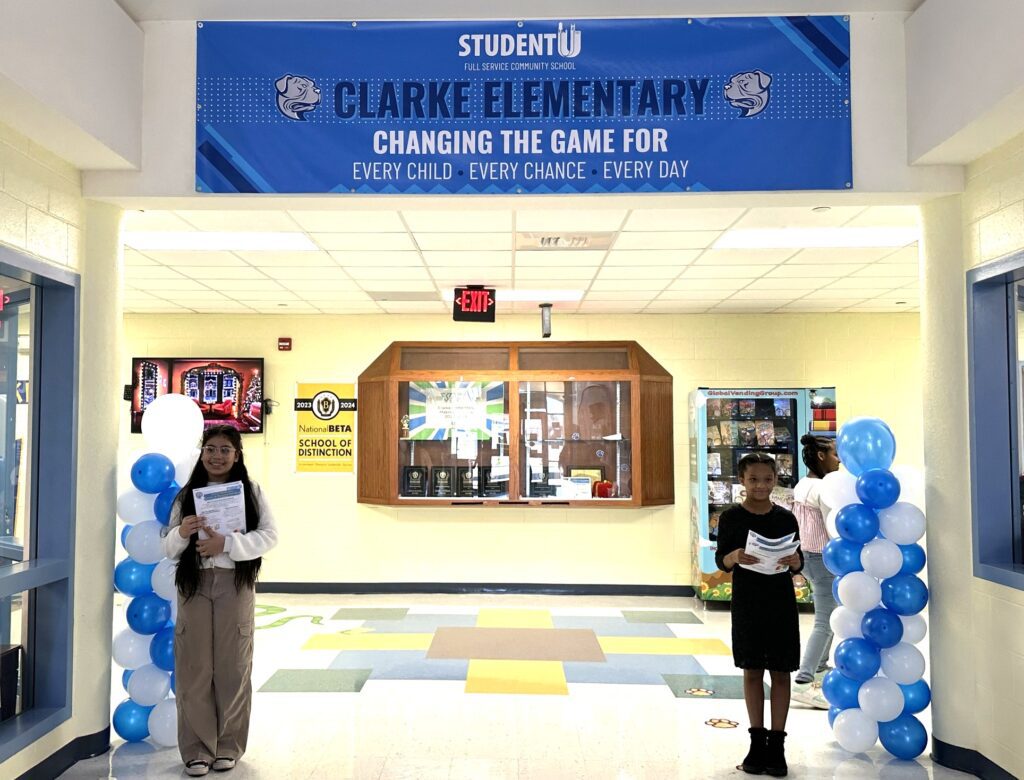
The school also served Thanksgiving dinner to more than 300 families in the community. The local health department paid for the dinner and was able to survey the families in attendance to learn more about their health.
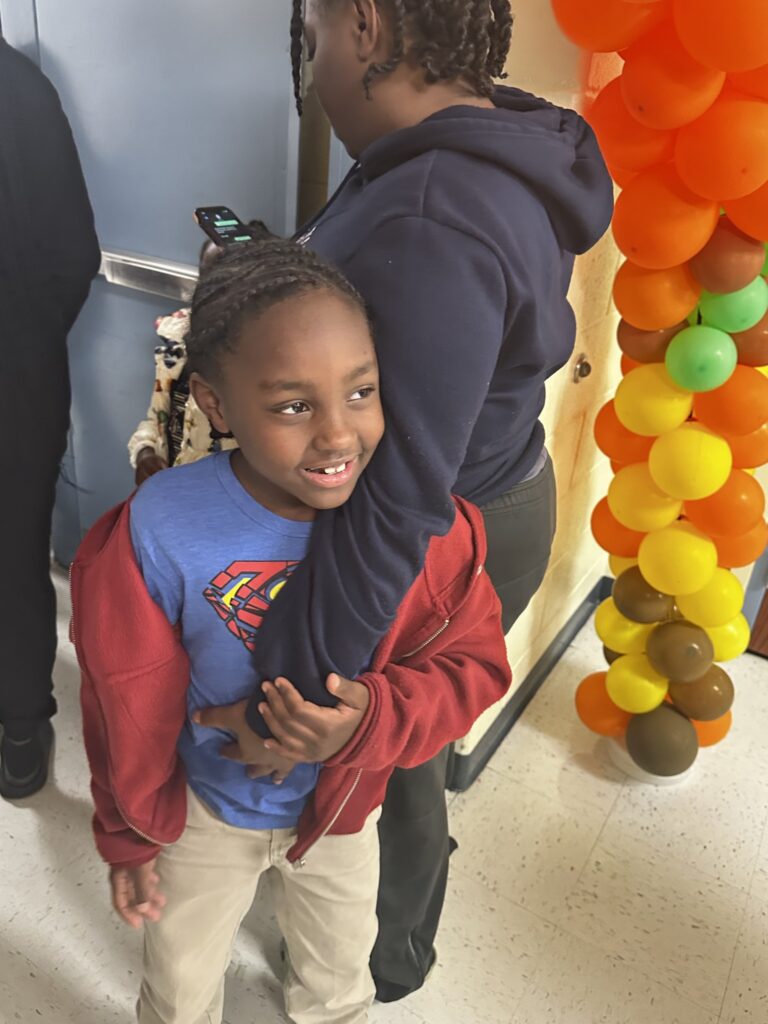
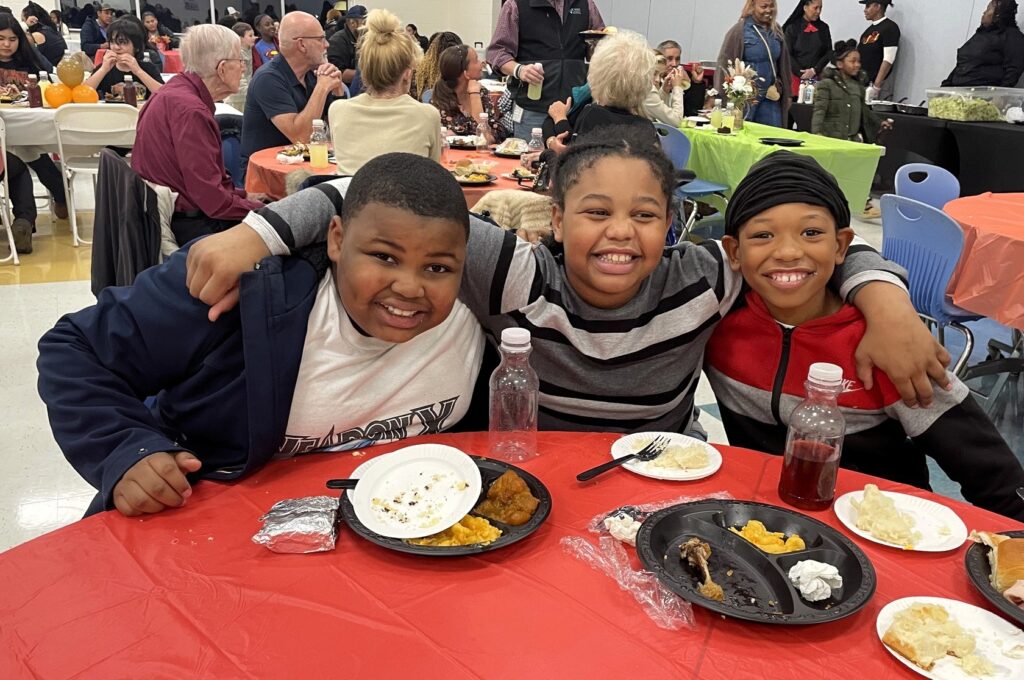
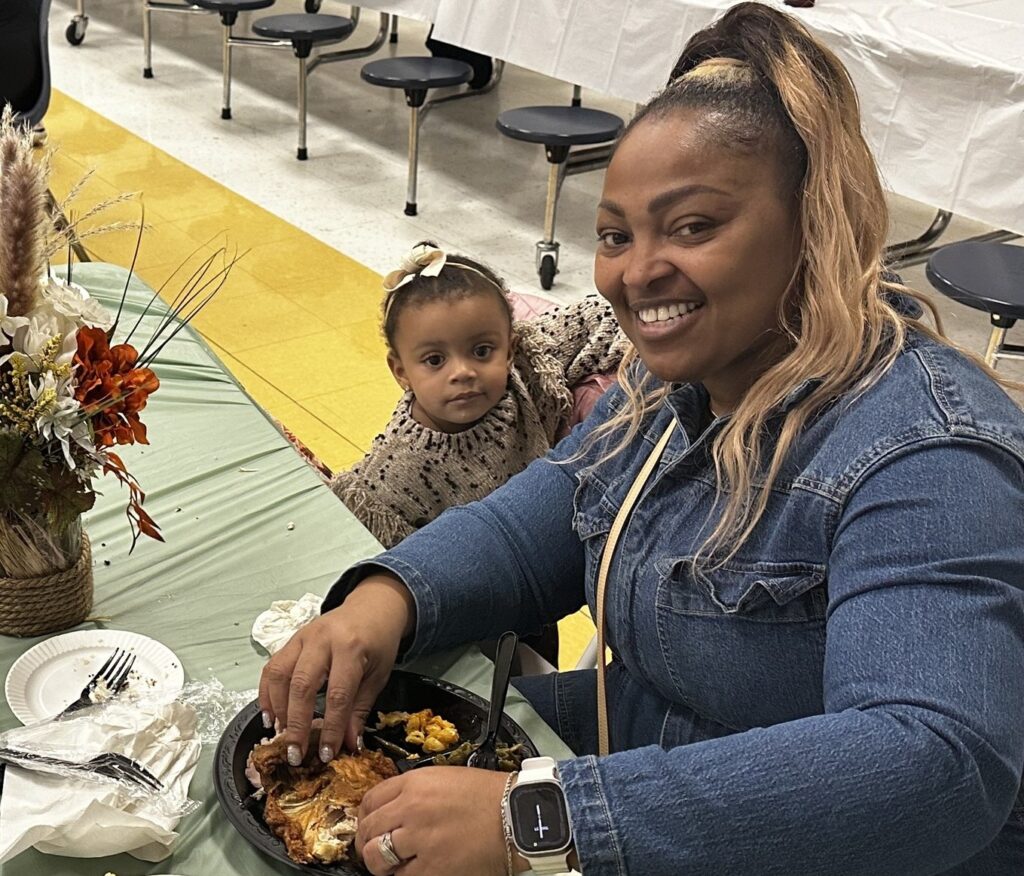
Attendance and satisfaction are up at Clarke Elementary, where now about 50 students are on a waitlist to attend the school.
Krystle Lindsey, the community school coordinator, says, “There is great excitement about community schools.”
Next up for the school? Establishing a comprehensive after-school program.
“Community schools is not just a model,” says Lindsey. “It’s the answer to a lot of the challenges our students and schools face.”
Clarke is not just a school. It’s a launch pad, and the journey has only just begun.
Krystle Lindsey, community school coordinator at Clarke Elementary
Why does it work?
Studies find that every $1 invested in a community schools strategy results in up to a $15 return to the community, according to the Coalition citing this report.
In response, students in community schools make academic gains. The trusting relationships students build further drive academic gains. Family and community engagement transforms lives by addressing housing, food, and financial issues, resulting in lower incidences of violence and street crime in communities.
And then the community schools are ready to meet community needs as they arise.
That premise was tested in the aftermath of Hurricane Helene.
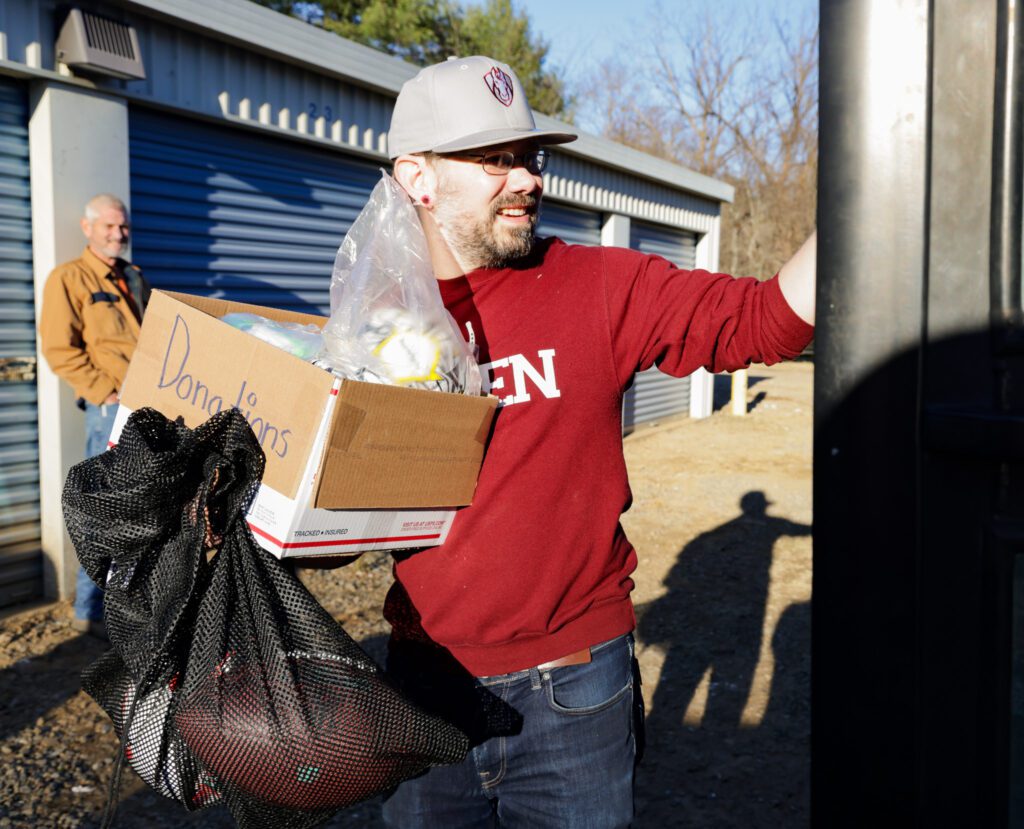
Josh Wells is the community school coordinator at C.D. Owen Middle, which is located in Swannanoa, a community hit hard by the hurricane. The school is one of nine community schools in western North Carolina supported by the United Way of Asheville and Buncombe County, according to the Coalition.
“In October, when we were out of school and everything was shut down,” says Wells, “one of the big impacts that community schools and my role had was that I already had contacts with lots of people and resources around the area.”
“I was able to go straight to people in the community to ask both, ‘What you need?’ and ‘What can you provide?’” says Wells. “Because of my role, people knew me as a point person with access to resources and an understanding of needs.”
Around 50 families with students at the school lost their homes or their cars. Wells coordinated donations from across the state, helped families find temporary housing, and solved transportation challenges. When a student or family had a specific need, Wells was able to find the right resource or organization to meet that need.
Community schools play a critical role in meeting student, family, and community needs.
Dr. Amy Ellis, director of the University of Central Florida Center for Community Schools, recently visited a community school in Vance County.
“North Carolina is modeling student engagement at its most authentic. It is not hypothetical. It is not performative. It’s practical. Real dollars. Real decisions. Real impact,” said Ellis.
Resources
Here is more information about the Coalition.
Editor’s Note: EdNC receives support from Duke University.
Recommended reading
